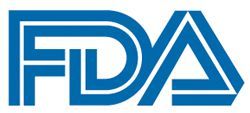Article
FDA Sets Review Date for Remestemcel-L for Steroid-Refractory Pediatric Acute GVHD
Author(s):
The FDA’s Oncologic Drugs Advisory Committee has scheduled a date to review data supporting the biologics license application for remestemcel-L as a treatment for children with steroid-refractory acute graft versus host disease.

The FDA’s Oncologic Drugs Advisory Committee (ODAC) has scheduled a date to review data supporting the biologics license application (BLA) for remestemcel-L (Ryoncil) as a treatment for children with steroid-refractory acute graft versus host disease (SR-aGVHD), according to Mesoblast Limited.1
The committee will meet on August 13, 2020. The investigational therapy was granted a priority review designation from the regulatory agency in April 2020 for the treatment of this patient population based on data from Study 275.
The ODAC will review the data in 2 separate sessions: a morning session that will focus on issues associated with the characterization and critical quality of the agent as they relate to effectiveness, and an afternoon session that will cover clinical trial data that had been submitted in the BLA.
The FDA will take the panel’s recommendation into consideration, but the final decision regarding the potential approval of remestemcel-L will be made by the regulatory agency alone.
Under the Prescription Drug User Fee Act, the FDA is scheduled to decide on the application by September 30, 2020.
Remestemcel-L is an agent that comprises culture-expanded mesenchymal stem cells derived from the bone marrow of an unrelated donor and it is administered via intravenous (IV) infusion, according to Mesoblast. The treatment was designed to have immunomodulatory properties that allow for it to offset the inflammatory processes involved in SR-aGVHD; it does this by downregulating the creation of pro-inflammatory cytokines, increasing the production of anti-inflammatory cytokines and promoting the recruitment of natural anti-inflammatory cells to involved tissues.
In Study 275, investigators examined remestemcel-L in a total of 241 children with grade B to D SR-aGVHD who had been enrolled at 50 sites spanning 8 countries. Thirty percent of the participants had grade C disease, and half had grade D disease. The mean patient age was 9.6 years and the majority of participants, or 60%, were white and male (61%). Notably, patients enrolled on the trial did not respond to steroids with or without other secondary and tertiary immunosuppressive therapies.
For the trial, patients were given 8 biweekly IV infusions of human mesenchymal stromal cells (2 x 106 per kg for the duration of 4 weeks) with an option for an additional 4 weekly infusions following day +28 in those who experienced either a partial response (PR) or a mixed response. The primary end point of the trial was overall response rate (ORR) at day +28.
Results showed an overall 28-day ORR of 65.1% (n = 157) in those who received remestemcel-L; this included a complete response rate of 14.1% (n = 34) and a PR rate of 51.3% (n = 123).2 Moreover, the ORR at day +28 was even higher in those with grade B and grade C disease, at 72.9% and 67.1%, respectively. Patients with grade D disease experienced a day +28 ORR of 60.8%.
The overall survival (OS) at day +100 was 66.9% (n = 160/239 evaluable patients) in those who received the treatment. Notably, OS through day +100 proved to be significantly higher in those who had experienced a day +28 response versus those who did not, at 82.1% versus 38.6%, respectively.
With regard to safety, the investigational therapy was found to be well tolerated, and no notable signals were reported.
Additionally, the single-arm Study GVD001/002 phase 3 trial enrolled a total of 55 children across 20 centers in the United States and examined the agent as a frontline treatment in children who failed to respond to steroids for aGVHD. Consistent with the data reported from Study 275, an OR was achieved in the majority, or 70% of patients, at day 28; this was found to be statistically significant versus the prespecified control value of 45% (P = .0003).3
The clinical response reported at day 28 was also found to be highly predictive of improved survival through day 100. Specifically, 87% of patients who achieved a day-28 OR had improved survival through day 100 versus 47% of those who did not (P = .0001). Notably, a similar predictive value was observed in survival through day 180, at 79% versus 43.8%, respectively (P = .003). The OS at day 100 was 74.1% with remestemcel-L and dropped to 68.5% at day 180.
Lastly, in the phase 3, randomized, placebo-controlled Study 280, investigators enrolled a total of 260 patients, 28 of which were children, and examined the addition of remestemcel-L to second-line therapy in patients with SR-aGVHD who had not responded to previous steroid treatment. Results showed a significantly higher day-28 OR in high-risk children and adults who had the most severe disease stages with remestemcel-L versus placebo, at 58% versus 37%, respectively (P = .03).3
To date, no FDA-approved options are available for patients under the age of 12 with SR-aGVHD in the United States, underscoring a great unmet need.
References
- FDA Advisory Committee sets review date for Mesoblast’s remestemcel-L in pediatric steroid-refractory acute graft versus host disease. News release. Mesoblast Limited. July 21, 2020. Accessed July 21, 2020. https://bit.ly/30DC4HY.
- Kurtzberg J, Prockop S, Chaudhury S, et al. Study 275: updated expanded access program for remestemcel-L in steroid-refractory acute graft-versus-host disease in children. Biol Blood Marrow Transplant. 2020;26(5):855-864. doi:10.1016/j.bbmt.2020.01.026
- Clinical outcomes using Ryoncil (remestemcel-L) in children and adults with severe inflammatory graft versus host disease published in three articles in Biology of Blood and Marrow Transplantation. News release. Mesoblast Limited. May 25, 2020. Accessed July 21, 2020. https://bit.ly/2ZNvrnb.









